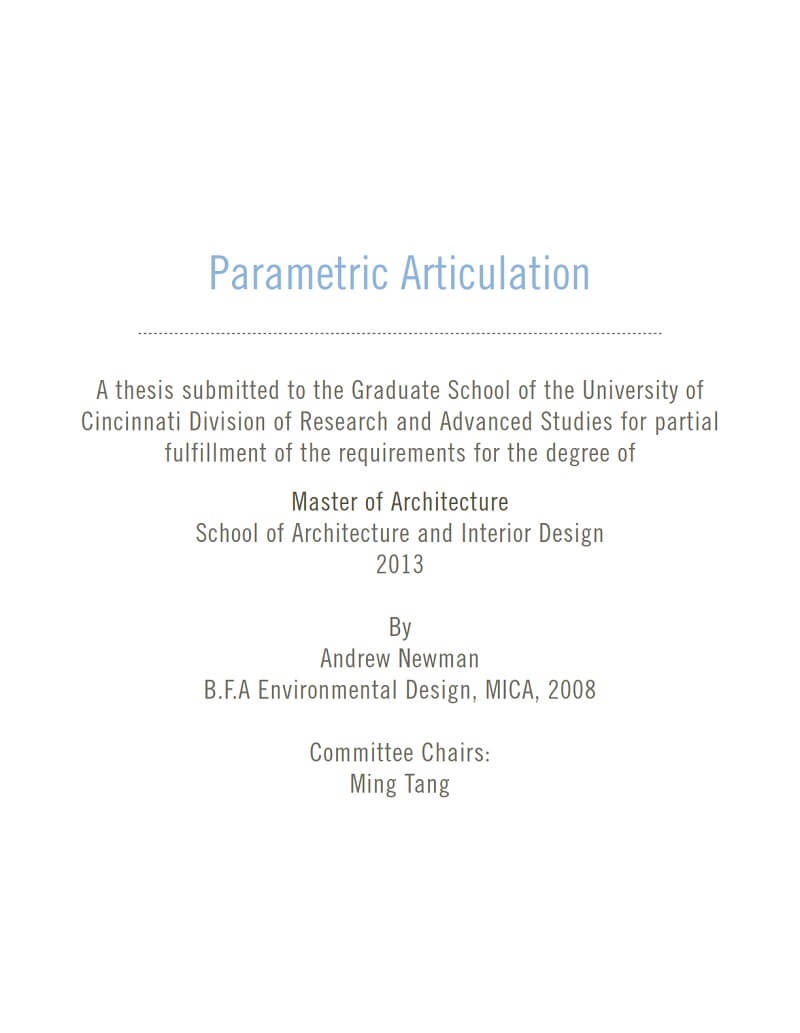Parametric Articulation

In the world today, actual concerns for human experience and climate change obligate professional disciplines related to the building industry to explore more innovative design solutions. With the scarce allocation of capital the practice of architecture is in the process of adapting to a more economical process of utilizing parametric tools to design, document, analyze and fabricate building facades. Parametric tools, however, can only aid a designer in the process of achieving the qualitative features of a demanded certain spatial experience.

Design and analysis of a building’s enclosure system is a fundamental first step in the design process to achieve the qualitative and quantitative benefits of comfort, protection and reduction in energy consumption. As we move forward into information-based future, it is important for the architecture practice to utilize the technological advances in industrial design, computational design and rapid fabrication processes. These advances bring with them the tools needed for architects to innovate, analyze and construct new dynamic enclosure systems for the future.

The Architectural Problem
Traditional methods of cladding and enclosing structures responsively tend to produce uniformly articulated facades. The character of building articulation, which is ultimately based on orientation, climate, and interior comfort, varies in terms of materials and methods. The lack of formal flexibility limits the freedom and ability to innovate new customized wall systems that could respond to their particular contexts. As a consequence to this limitation, the relationships between architectural geometry and environmental phenomena remain disengaged.

Parametric Utility
Parametric design and thinking can aid in this problem in two ways. One, it has the potential for establishing architecture as a material and theoretical genesis device – a design tool that makes environments and ideas about nature come to life. Its use can help solve the dilemma of misuse of potential environmental qualities and orientation of particular instances as drivers to orient building systems to their particular context.

Today, the desire for complex, responsive curtain wall systems are rooted in using parametric based techniques. With the aid of computational design the relation between the process of formation, the driving information, the generation of form and its resulting performance will become externalized.
Secondly, parametric design provides designers with an analysis tool that enables designers to discover and develop novel curtain wall systems, material effects, and an improved ability to achieve an optimal level of performance. The relative success or failure of curtain wall systems, in terms of its aesthetics and technical performance, may often be traced to the selection of material, detailing and fabrication of its components. As an analyzing tool, parametric computation can be utilized to dissect and analyze the fundamental information needed for fabrication.

The answer, therefore, lies in our attempt to rationalize the parametric utility for construction purposes. In order for parametric techniques to maintain its promise for innovative discovery, and evolve the way architectural articulation is conceived, a new hybrid design process must be established that requires a strategy of thinking parametrically and establishing a closer collaboration amongst engineers, consultants and design professionals.































Comments